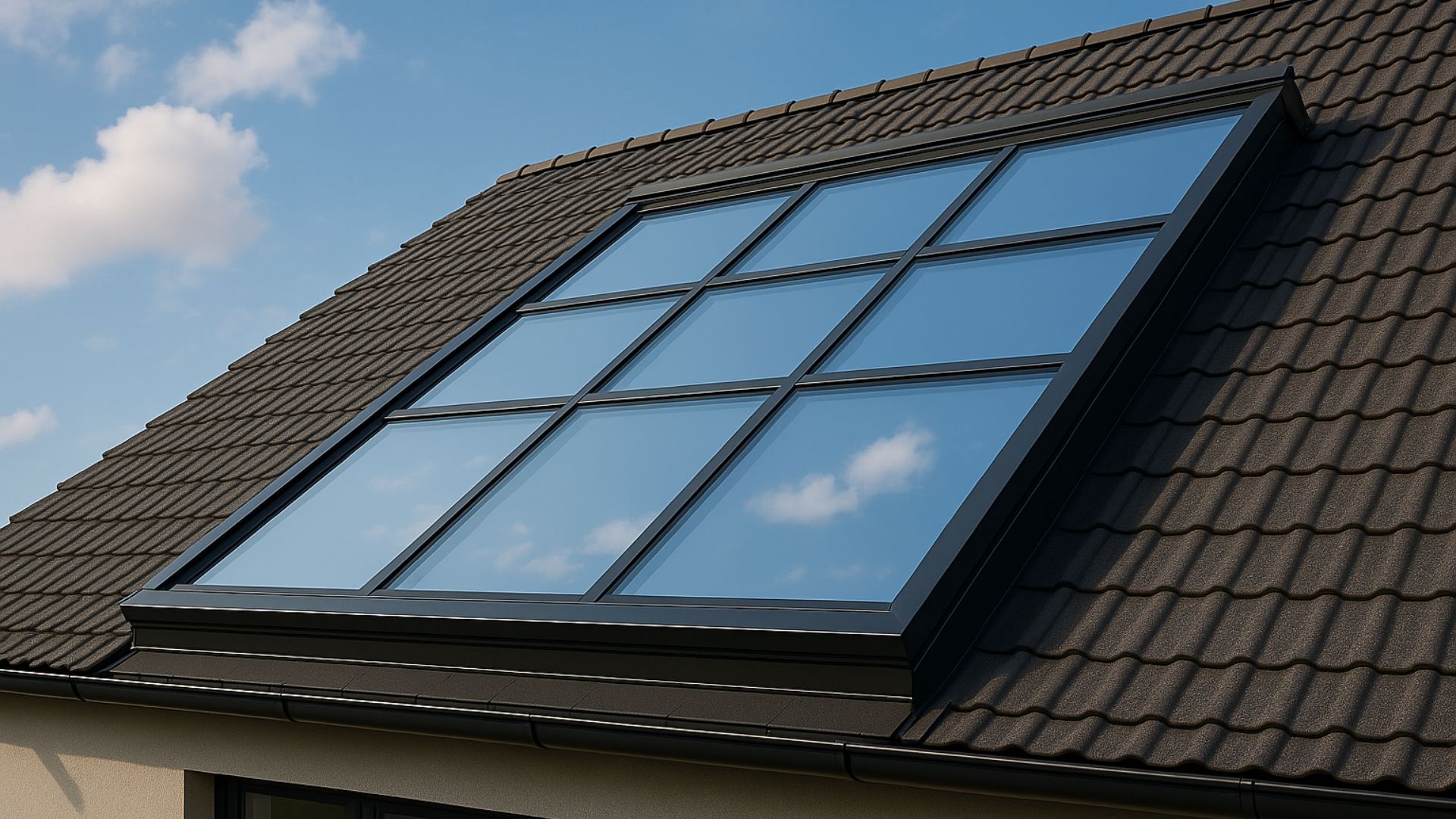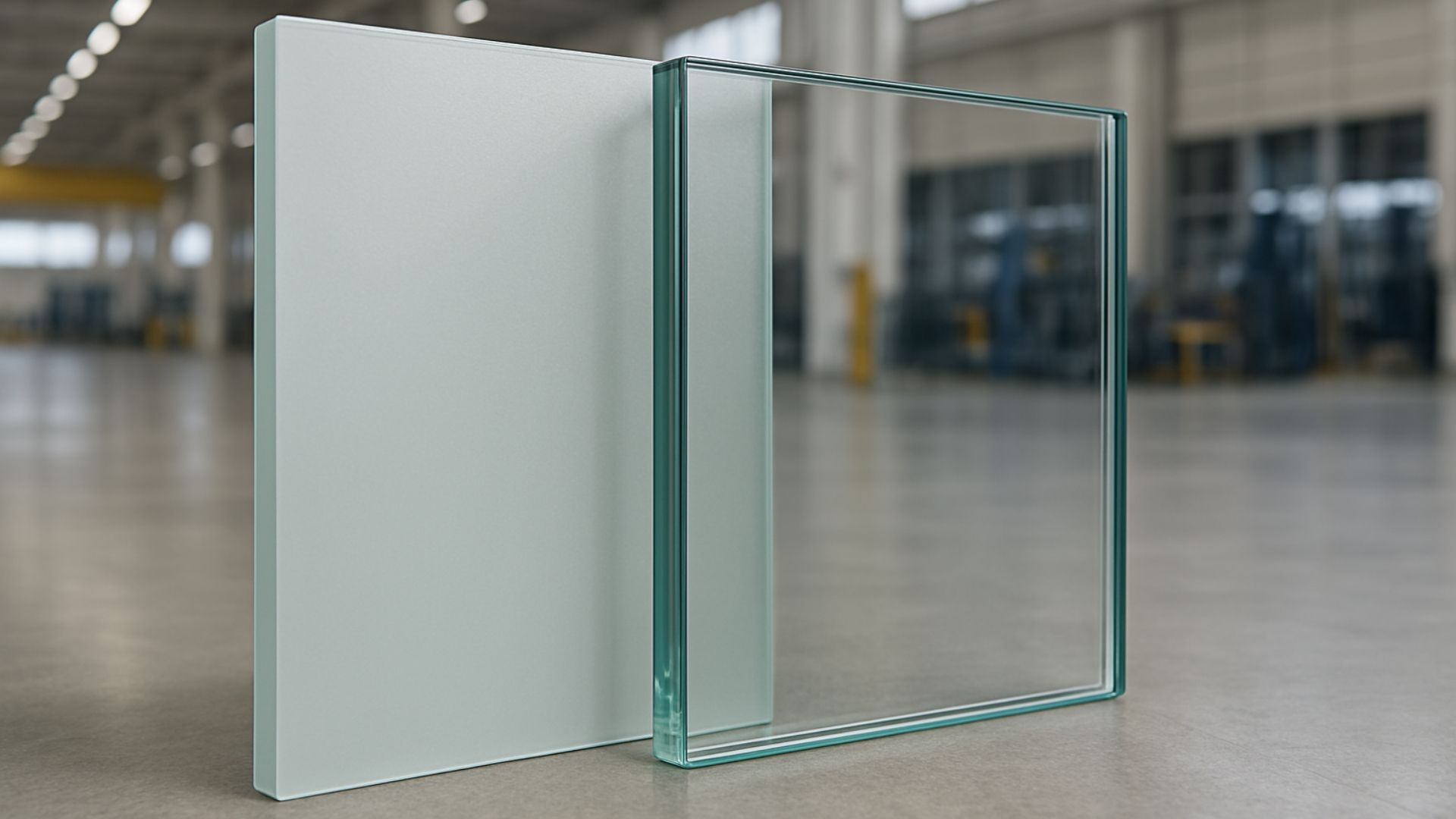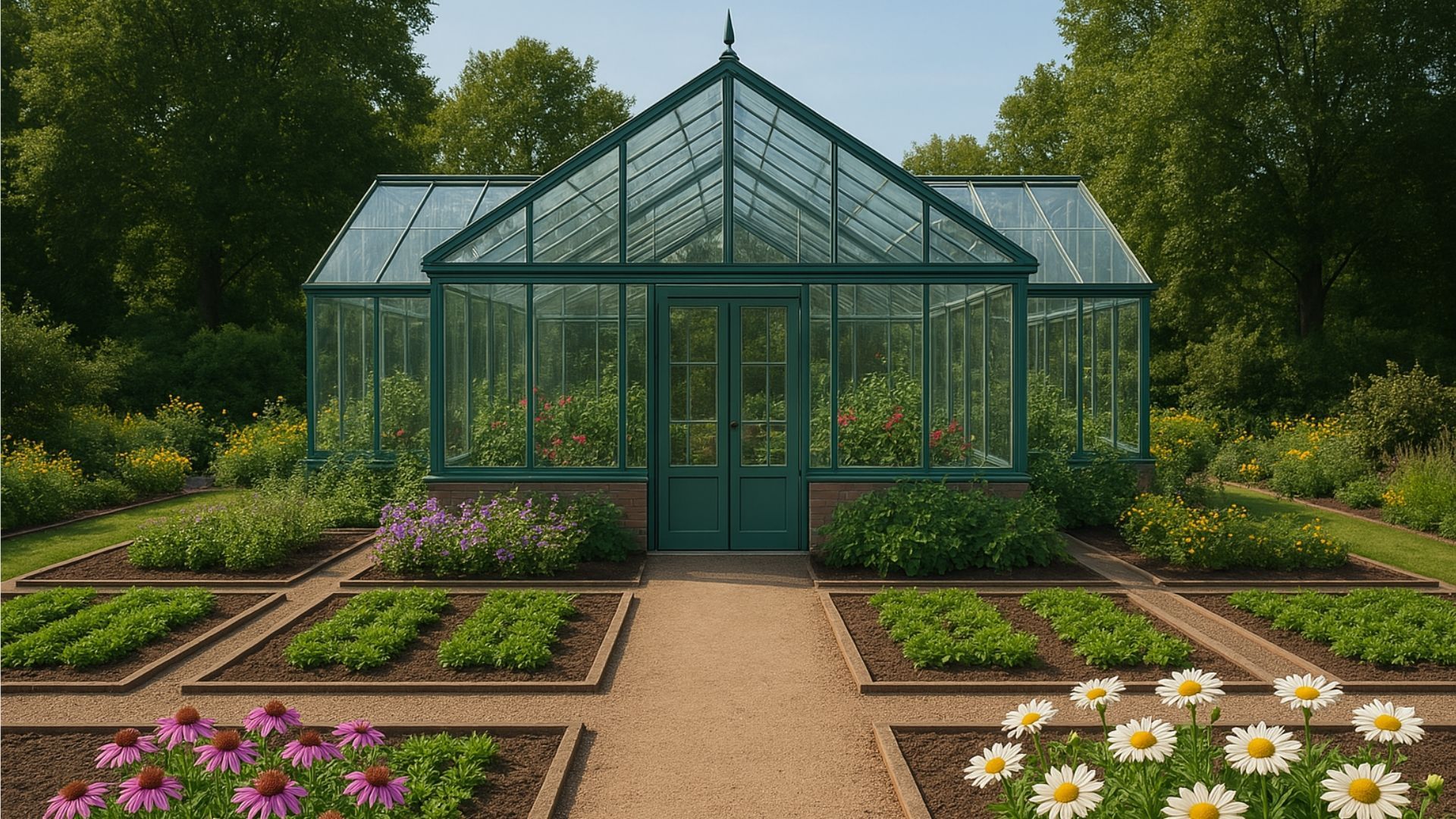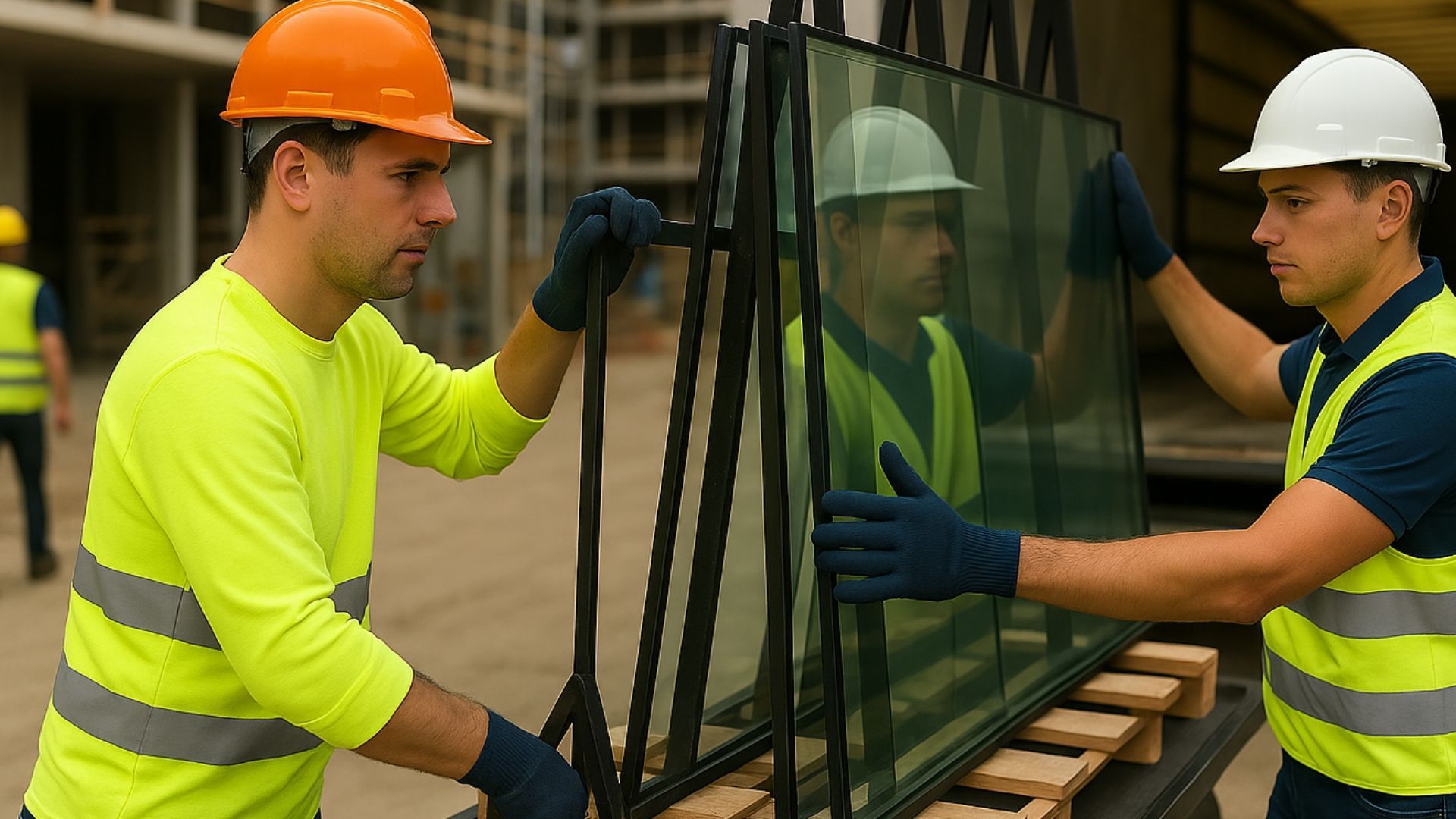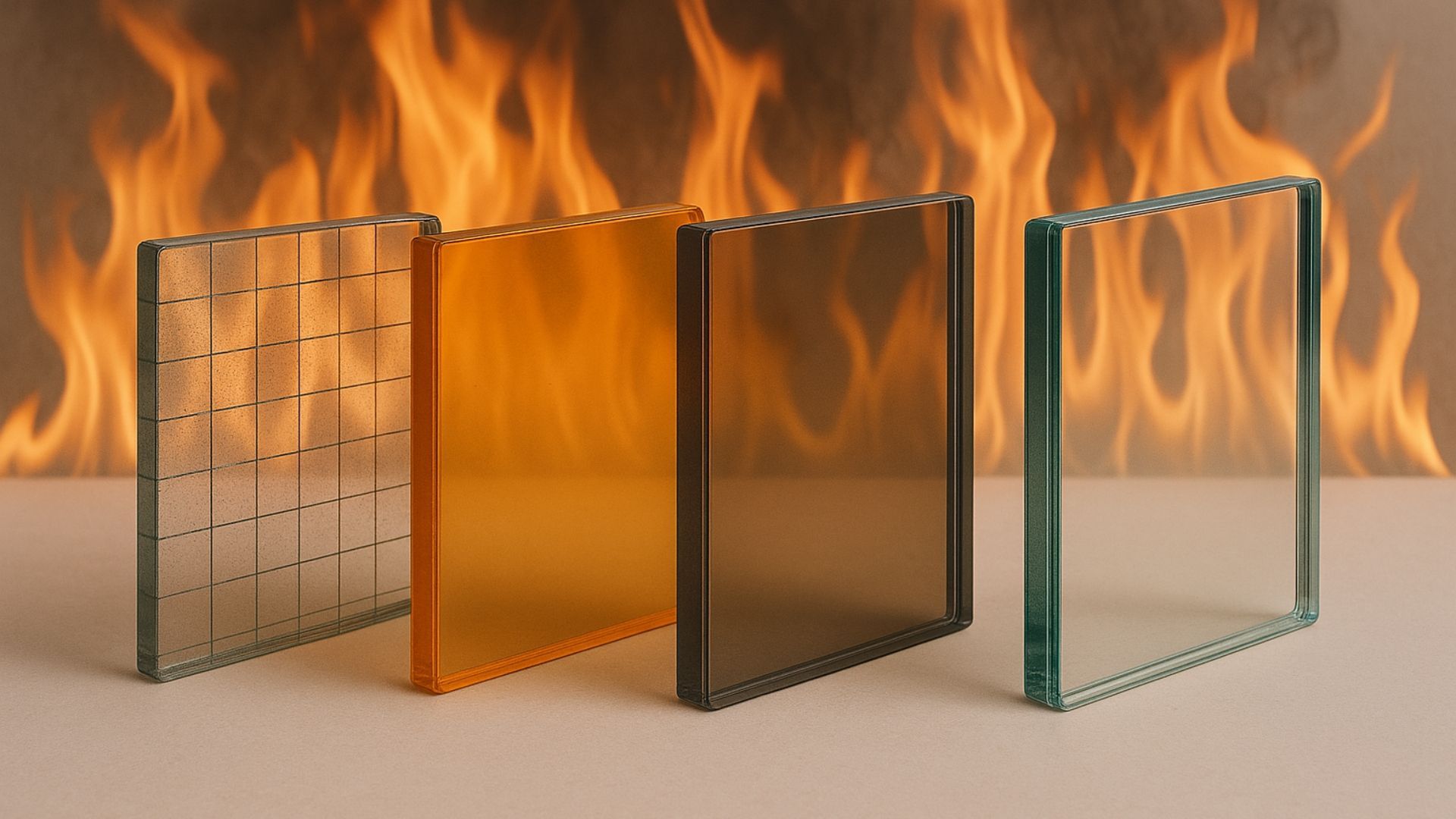3 fabric-interlayer glass ideas to transform indoor spaces
Share this blog:
Learn 3 ways you can use fabric-interlayer glass to add colour, contrast and utility to an indoor space.
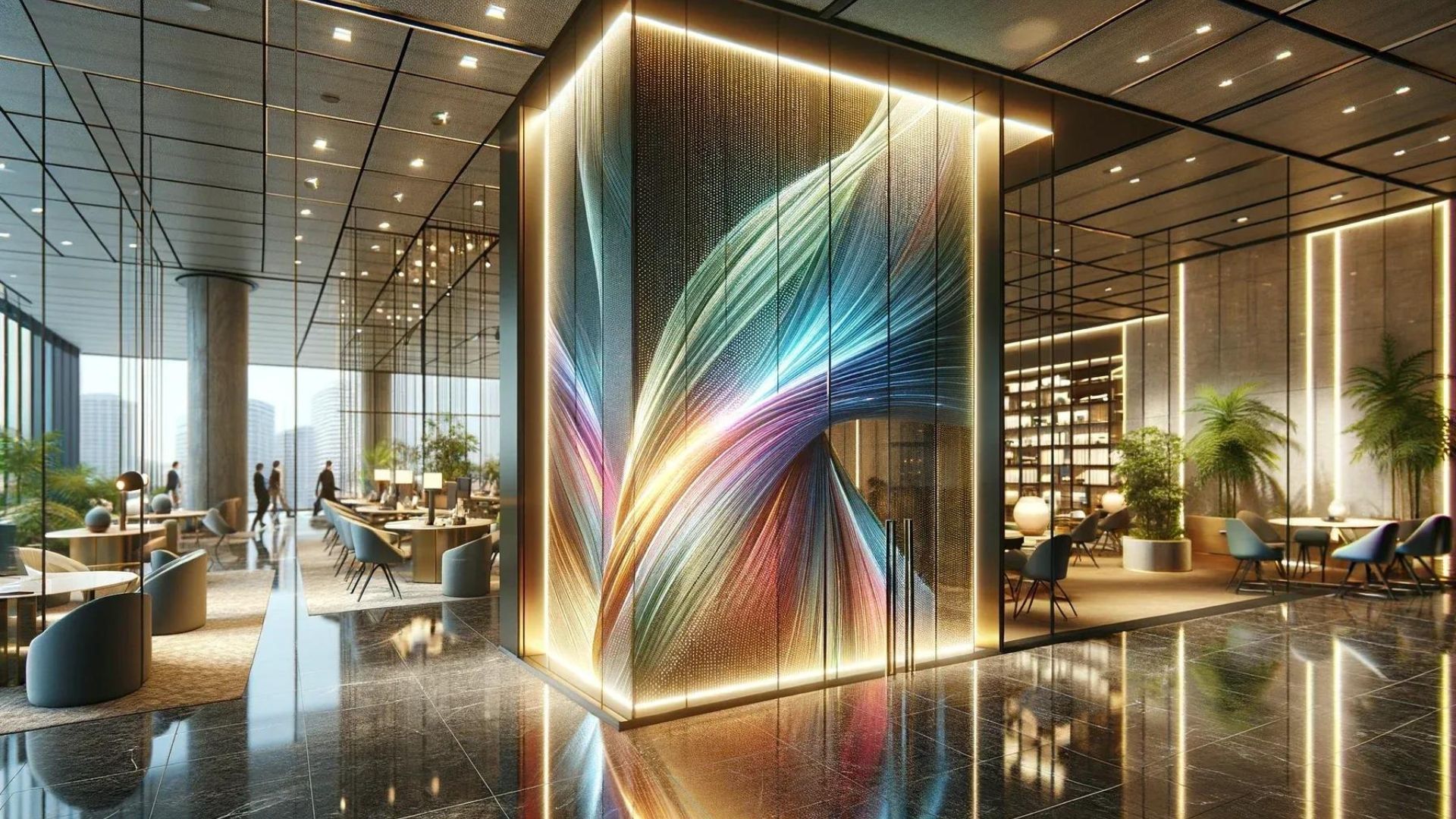
Architects and interior designers have long understood the aesthetic potential of glass.
Glass partitions can
foster a sense of order and utility in an open-plan environment without sacrificing light. Glass wall cladding can create a smooth, uniform-looking finish that delivers high style with low upkeep. And
glass mirrors are pure magic, allowing designers to play with light and space like they're folding the fabric of their own little universe.
But in creative terms, this is child's play. Designers are always seeking new ways to wield glass in indoor spaces – and fabric, funnily enough, might just be the aesthetic skeleton key they're looking for.
Yes, fabric-interlayer glass can unlock all sorts of possibilities in terms of colour, light and geomancy. In this guide, we show you how to put three of these possibilities into action.
But first, let's recap.
What is fabric-interlayer glass?
Fabric-interlayer glass is a type of laminated glass (hence the alternative name, "fabric-interlayer glass").
The usual recipe for laminated glass goes something like this: you take two sheets of glass and fix them together with a polymer interlayer. In simple terms, the interlayer acts as the glue in this glass sandwich.
And, yes – we're vastly simplifying things here. Laminated glass can vary in the number of glass layers, the type of glass used and the interlayer material, among other things.
But the elevator pitch for laminated glass is that it's stronger than standard float glass and breaks more safely. You can't really
smash
laminated glass: that gluey interlayer holds the shards in place so the glass sheet stays in its frame.
It's useful – but it's also aesthetically versatile. See, you're not limited to using polymer as an interlayer. You can also slip in
coloured sheets,
smart tinting films and, yes, fabric.
And that's fabric-interlayer glass. It's two or more sheets of glass with one or more textile interlayers. Simple, really.
But the simplest ideas are often the most fruitful. Depending on the fabric, you can do things with patterns, translucencies and contrasts that our glass-making forbears would never have thought possible. If you combine fabric interlayers with other products like coloured films and LED lighting, then the aesthetic potential increases exponentially.
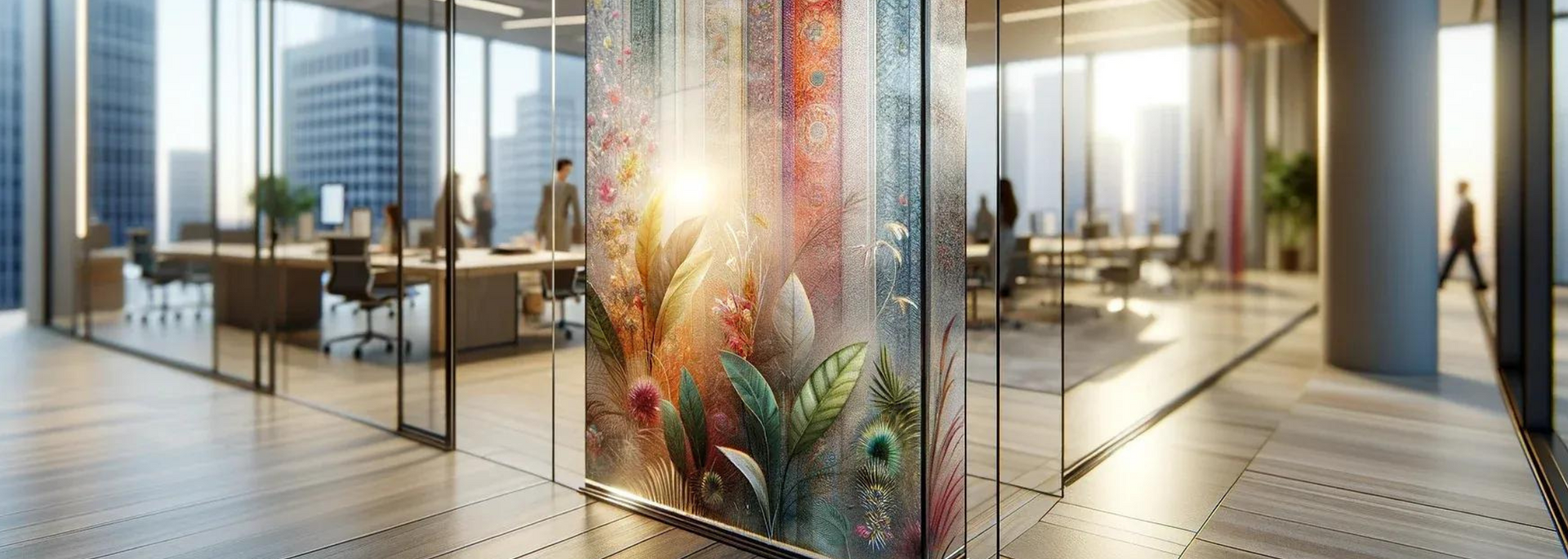
We're sure you're coming up with ideas already. But to give you a head start, here are three we've dreamed up.
1. Fabric privacy screens
Let's say you want to partition off an area that needs privacy – an office boardroom, say. You want to use glass. Anything else would make the space feel dark and dingy.
In this situation, the tried-and-tested option would be frosted glass. It lets light fill the space while blocking prying eyes. Plus, it maintains a clean, modern look with wide-ranging appeal. Job done, right?
Not if you want to try something different. If your theme demands colour and contrast, fabric-interlayer glass might be a better fit.
Using translucent or mesh fabrics, you can limit visibility, let light through and turn the partition itself into a feature. Aesthetically speaking, you can achieve much more with textiles than you could with frosted glass alone – imagine a screen shot through with intricate lace, for instance, or a delicate coloured gauze.
If you need more privacy, you can simply use a tighter weave or combine your fabric with a tinted translucent interlayer. The possibilities are almost endless.
2. Fabric feature walls
Used in privacy screens, fabric's beauty plays second fiddle to its utility. It's there to keep prying eyes out of private spaces – and it just so happens to look pretty snazzy.
But there's no reason why textiles shouldn't take centre stage. You could, for instance, use a bold fabric to help draw the eye to the back of a room – or break up an otherwise drab space with colourful, patterned accents.
Again, the possibilities know no bounds. Imagine a glass partition showcasing a multi-sectioned fabric banner. Or glass wall cladding encasing sheets of paisley-patterned cotton, bringing to mind vintage wallpaper – but without the fusty appearance or issues with upkeep.
Digital printing on glass can achieve similar effects. But as much as we love the printed look, it simply can't reproduce the tactility or textural intricacy of fabric.
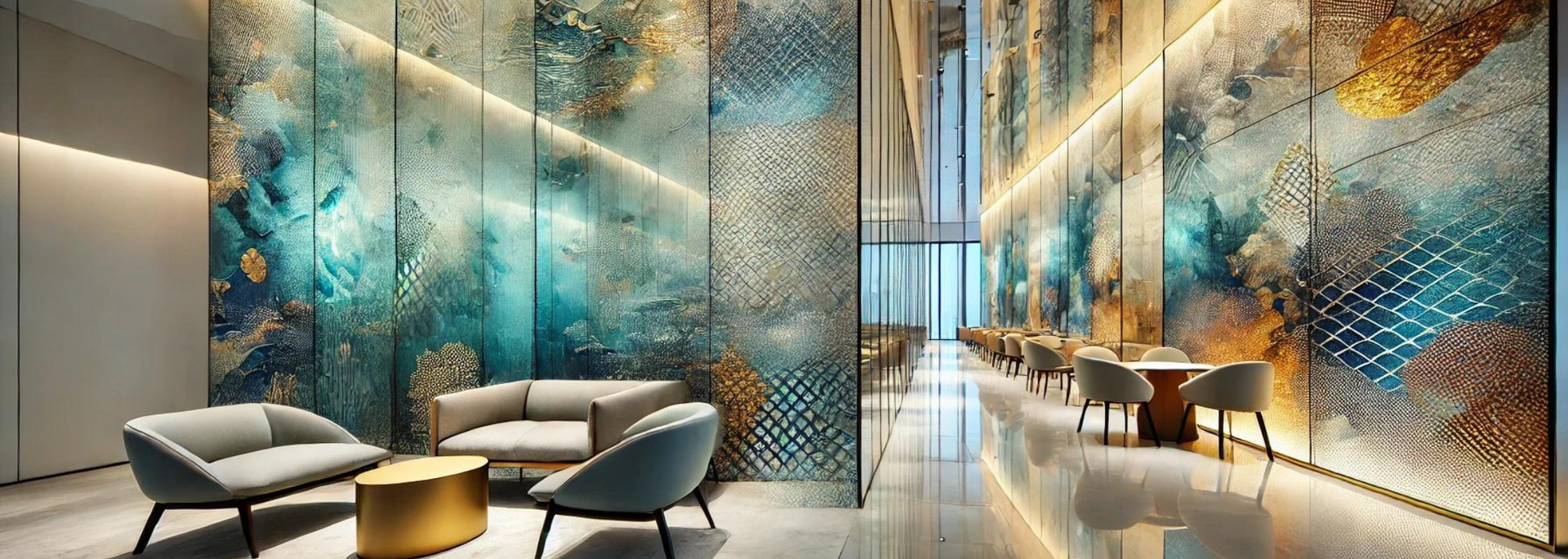
Employing fabric-interlayer glass in wall cladding opens up several avenues through which to explore material aesthetics, too. You could, for instance, use a mesh fabric to allow the building's brickwork to show through – or combine it with an opaque coloured interlayer for a sheer modern look.
Our fabric glass can even be used on exterior-facing windows and curtain walls. It's supplied as standard with TGWR: a water-resistant laminate ideal for damp or outdoor environments. It can also be fitted with an SGP layer that's five times stronger than traditional laminates.
3. Fabric illuminated glass
We've talked a little about how our fabric glass can be combined with other ToughGlaze products, such as coloured and translucent interlayers.
But we've saved perhaps the best for last: LED lighting.
TG WOL, our
illuminated glass product, uses Spanlite's industry-leading edge lighting system to transform glass panels into slim, elegant and energy-efficient light sources.
These panels are often combined with
digital printing. A 720 DPI image is fired into the glass using ultra-strong ceramic inks, which last as long as the glass itself. This allows designers to create beautifully intricate designs that appear to light up all by themselves – the edge lighting strips remain all but invisible.
But digital printing isn't the only option. You can also achieve impressive effects using fabric-interlayer glass. In fact, the interaction of light and fabric allows for a sense of "visual tactility" that wouldn't be possible with printing alone. In other words, it's perfect if you want to create designs that look good enough to touch.
As for how to use them, well… you've got options. How about tall illuminated walls, which disperse their light through a gossamer haze? Or textured illuminated splashbacks with colourful patterns? Or even a piece of illuminated fabric wall art?
Sorry to sound like a broken record, but the possibilities really
are
endless.
Are you interested in incorporating
fabric-interlayer glass into your architecture or interior design project? ToughGlaze is one of the UK's premier suppliers of this unique and versatile glass product. To request a quote or explore your options in more detail, simply
get in touch with our experts.


